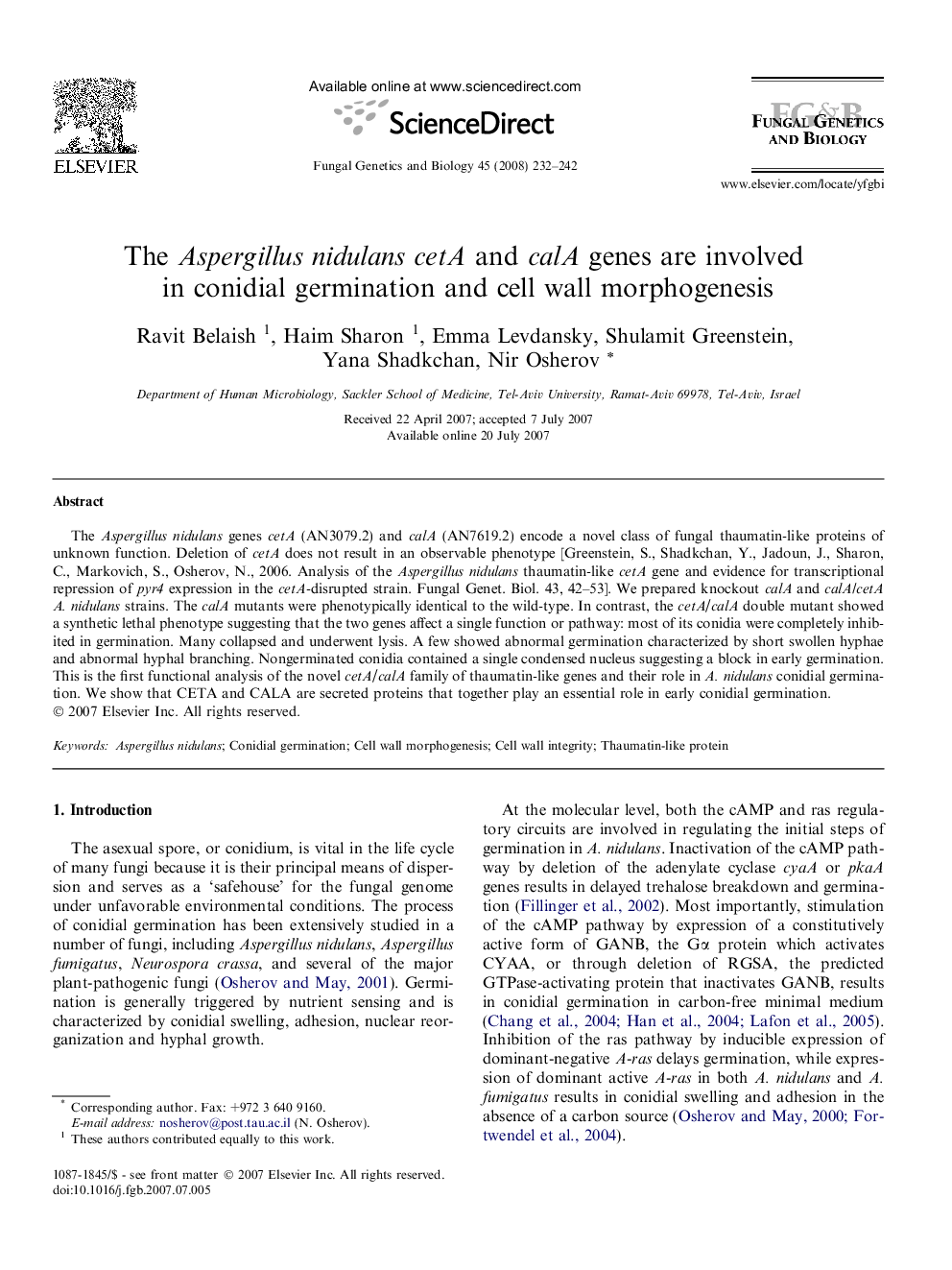| Article ID | Journal | Published Year | Pages | File Type |
|---|---|---|---|---|
| 2181334 | Fungal Genetics and Biology | 2008 | 11 Pages |
The Aspergillus nidulans genes cetA (AN3079.2) and calA (AN7619.2) encode a novel class of fungal thaumatin-like proteins of unknown function. Deletion of cetA does not result in an observable phenotype [Greenstein, S., Shadkchan, Y., Jadoun, J., Sharon, C., Markovich, S., Osherov, N., 2006. Analysis of the Aspergillus nidulans thaumatin-like cetA gene and evidence for transcriptional repression of pyr4 expression in the cetA-disrupted strain. Fungal Genet. Biol. 43, 42–53]. We prepared knockout calA and calA/cetA A. nidulans strains. The calA mutants were phenotypically identical to the wild-type. In contrast, the cetA/calA double mutant showed a synthetic lethal phenotype suggesting that the two genes affect a single function or pathway: most of its conidia were completely inhibited in germination. Many collapsed and underwent lysis. A few showed abnormal germination characterized by short swollen hyphae and abnormal hyphal branching. Nongerminated conidia contained a single condensed nucleus suggesting a block in early germination. This is the first functional analysis of the novel cetA/calA family of thaumatin-like genes and their role in A. nidulans conidial germination. We show that CETA and CALA are secreted proteins that together play an essential role in early conidial germination.
